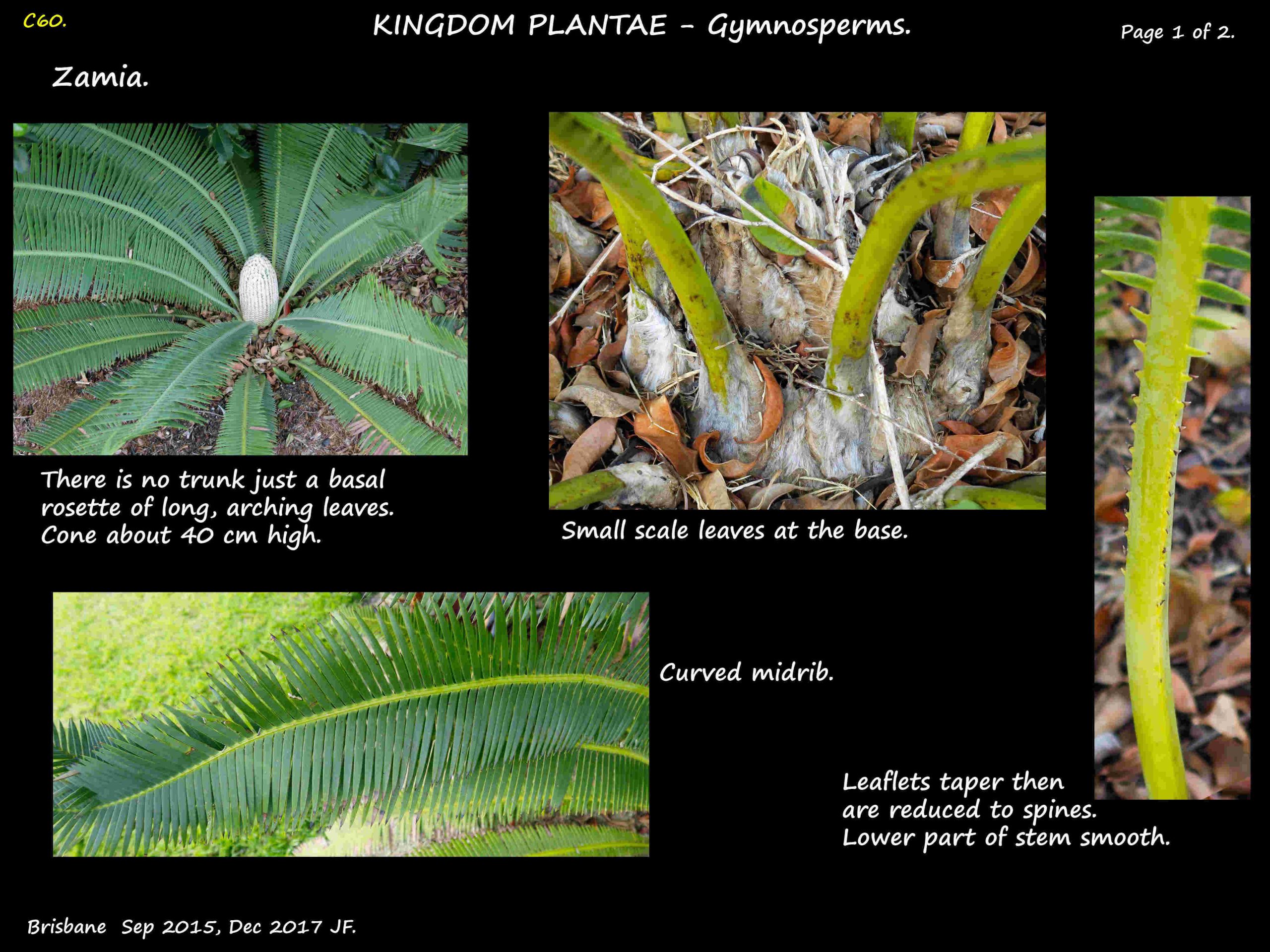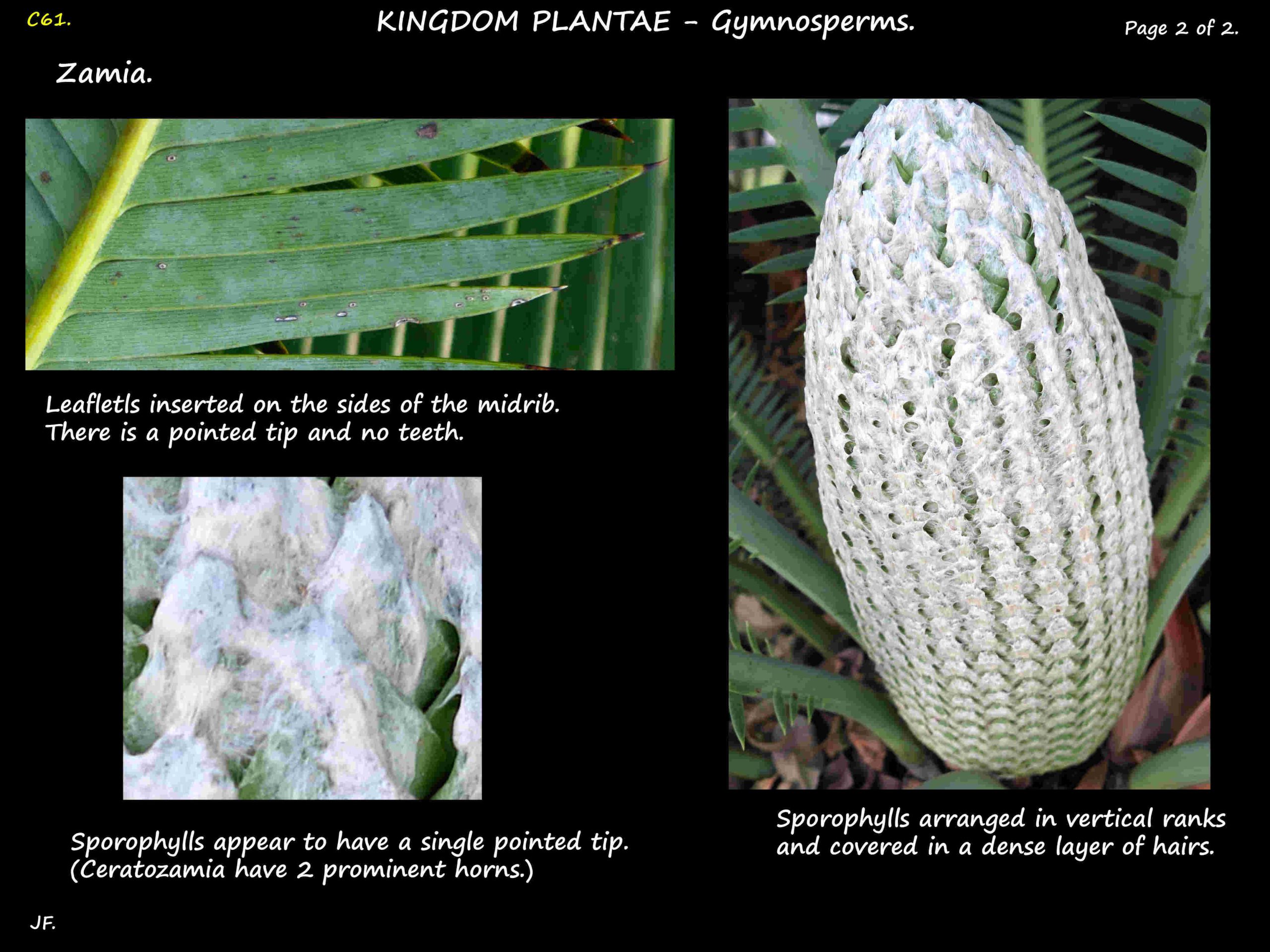Zamia & Ceratozamia.
Zamia.
The stems/trunks may be below or above ground and some produce suckers.
There can be few or many, spirally arranged leaves interspersed with small scale leaves.
Young leaves are hairy.
Leaves are once divided and the lower leaflets are not reduced to spines.
Leaflets, inserted on the sides of the leaf midrib, are simple and some have spines on the margins.
Leaflets have no midrib but roughly parallel branching veins.
Male and female plants have cones, sometimes stalked, with the sporophylls in vertical rows.
The microsporophylls have tips that can be flattened, faceted or slightly bilobed but without upturned spines.
The female megasporophylls have a wide tip similar to the males.
There are usually 2 ovules on each megasporophyll.
The seeds have an orange, red, yellow or almost white fleshy covering.
Ceratozamia.
Ceratozamia are very similar to Zamia.
The main difference appears to be in the sporophylls.
Ceratozamia. (10 species).
Leaves pinnate and not apically truncate.
Leaflets without a discernable midrib and with multiple parallel veins.
Leaflets to not fall off.
Sporophylls arranged in vertical rows and have 2 prominent horns.
Zamia. (about 35 species).
Leaves pinnate and not apically truncate.
Leaflets have no discernable midrib but have multiple parallel veins.
Leaflets do not fall off.
Sporophylls arranged in vertical rows and have no horns.
J.F.



